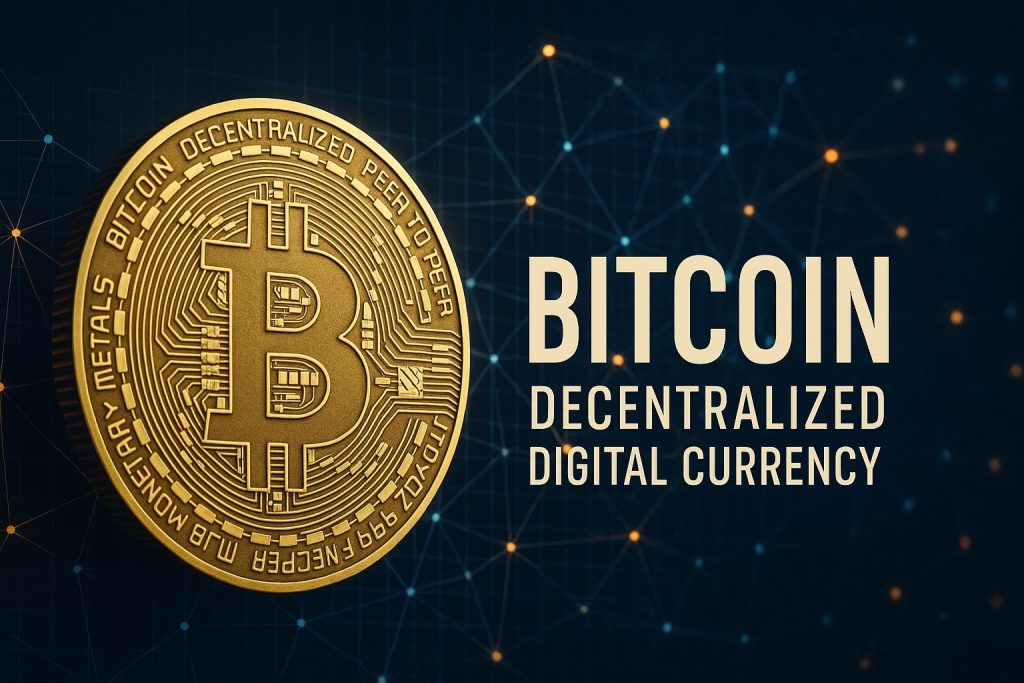Bitcoin, a pioneering technology based on blockchain, is still largely unproven within mainstream financial and economic sectors. While its speculative nature and inherent anonymity generate intrigue for some, they can also raise concerns for others.
1. Understanding Bitcoin
Decentralized Digital Currency: Bitcoin stands as the first and most widely acknowledged cryptocurrency. Unlike traditional currencies such as the U.S. dollar or euro, which are issued and regulated by central banks, Bitcoin operates on a decentralized network controlled by no single authority, be it a bank, government, or corporation.
Peer-to-Peer Transactions: Bitcoin allows users to engage in transactions directly with one another, eliminating the need for intermediaries like banks. This system can lead to quicker, cheaper, and more private transactions, especially beneficial for international payments.
Genesis of Bitcoin: Launched in 2008 by an unidentified entity or individual using the name Satoshi Nakamoto, Bitcoin’s open-source code was made available in 2009, creating a new monetary landscape.
Blockchain Foundation: The Bitcoin network relies on blockchain technology, a distributed public ledger that permanently records all transactions. This technology is crucial for Bitcoin’s security and transparency.
2. Core Characteristics of Bitcoin
Decentralization: A defining trait of Bitcoin is its decentralized structure. A global network of computers, known as nodes, collectively verifies and records transactions, negating the need for central oversight.
Scarcity: The supply of Bitcoin is capped at 21 million coins, built into its protocol to mitigate inflation and create scarcity similar to precious metals like gold.
Mining Process: New Bitcoins are introduced via “mining,” where specialized computers solve intricate mathematical challenges. The first to succeed adds a block of verified transactions to the blockchain and receives new Bitcoins along with transaction fees, enhancing network security.
3. How Bitcoin Functions Simplified
Initiating Transactions: To send Bitcoin, a digital wallet is used to start the transaction. Users input the recipient’s public address and the transfer amount.
Digital Signatures: Transactions are authorized with a private key, confirming ownership of the Bitcoin being sent.
Broadcasting Transactions: The signed transaction is then sent out to the global Bitcoin network for verification.
Network Verification: Miners verify transactions and check for needed conditions, grouping valid ones into blocks before competing to solve a cryptographic puzzle to add the block to the blockchain.
Transaction Confirmation: After a block is added, the transaction is regarded as confirmed, gaining security as more blocks are built on the chain, thus becoming effectively irreversible.
4. Sources of Bitcoin’s Value
The question of what gives Bitcoin its value is a topic of ongoing debate among economists and investors. Its value does not come from traditional backing like fiat currencies or physical assets but emerges from several elements:
Scarcity: With a limit of 21 million Bitcoins, this built-in scarcity helps establish long-term value, echoing the rarity of precious metals.
Security and Decentralization: Designed to thwart censorship or manipulation, Bitcoin’s decentralized nature builds resilience and trust.
Network Effects: The increasing adoption by individuals and businesses enhances Bitcoin’s utility and credibility, refining its value proposition.
Store of Value: Many view Bitcoin as a digital counterpart to gold, considering it a hedge against inflation and a safe asset during economic unpredictability.
Bitcoin embodies a complex and evolving technology. While it presents significant benefits, like decentralization and global reach, it also comes with considerable risks, such as volatility and regulatory uncertainty.



